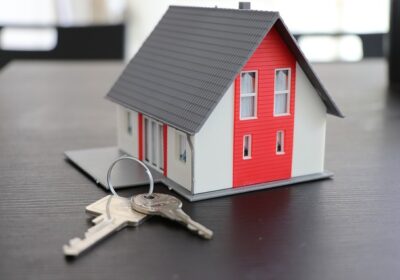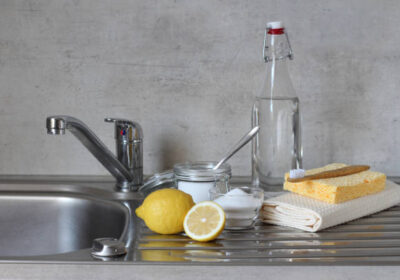Eco-Friendly Home Improvements – Saving Money and the Planet
Having a home is an investment that requires a lot of upkeep and care. If you’re concerned about your impact on the planet, there are many eco-friendly home improvement projects that can help you reduce your energy consumption and save money.
To make the biggest impact, you need to first evaluate your current energy usage. Once you know where your biggest energy leaks are, you can prioritize your eco-friendly renovations accordingly.
Insulation
Insulation is an important home improvement because it reduces the amount of energy that your heating system uses and improves your comfort. In addition, it helps prevent pollutants from entering the atmosphere and it can be used as a way to reduce your carbon footprint.
When deciding what type of insulation to use, you should consider its R-value, which is the measure of how well it resists heat flow. The higher the R-value, the more effective the insulation is at limiting the flow of energy.
The type of insulation you choose depends on your climate, but most homeowners should use enough to achieve an R-value of R-30 to R-60 [source: U.S. Department of Energy].
If you’re considering adding insulation to an existing house, a good place to start is with the attic. According to the Green Home Gnome, as much as 25 percent of a home’s energy loss comes through the attic.
Attics are also the best places to add vapor barriers and other materials that prevent moisture from escaping your home. If water vapor does escape, it can cause condensation and mold to grow.
There are several types of insulation, including blown-in fiberglass, cellulose and polystyrene foam. Each of these has its own advantages and disadvantages.
For example, fiberglass is a more odorless and non-toxic alternative to cellulose, but it can breakdown, sag and settle over time. Fiberglass can be a fire hazard and requires personal protective equipment (PPE), such as masks and gloves.
Cellulose, on the other hand, is a natural material that has a high R-value and doesn’t require PPE. However, it is more costly and needs to be replaced in the future.
Other types of insulation include blown-in fiberglass, spray foam and loose-fill insulation. These are available in many different forms, such as batts and rolls.
Another good option is a material called “rock wool.” This insulation is made from a mixture of minerals, and it’s naturally fire-resistant and resistant to mold and mildew.
Other eco-friendly options for insulation include cotton batts, recycled glass and recycled cellulose. Some of these materials fulfill the EPA’s Recovered Material Guidelines, which keeps them out of landfills while increasing your home’s energy efficiency.
Low-Flow Toilets
If you’re looking for an eco-friendly home improvement, consider installing a low-flow toilet. These water-saving appliances can cut down your family’s water consumption by up to 20% to 60%. And, they can save you up to $140 per year in water bills.
Using the same basic principle as Joseph Adamson’s siphon flush, today’s low-flow toilets flush waste from a tank by gravity and atmospheric pressure. They’re less expensive and more efficient than standard toilets, which often use up to seven gallons of water for each flush.
A modern low-flow toilet can save your family up to 13,000 gallons of water per year on average, according to the EPA. If you install one in your home, you’ll quickly recoup the cost of the toilet by reducing your water bill.
These new toilets, which have gone through a rigorous testing process to earn the WaterSense label, typically use 1.28 gallons of water per flush, 77% less than a traditional toilet. And, because they meet the EPA’s water-efficiency standards, they also help protect our nation’s freshwater resources.
Another great thing about these toilets is that they last up to 30 years, making them a good investment for your home. Even better, many cities, states and counties offer rebates on low-flow toilets, so you can get a discount off the upfront price.
The key to choosing a low-flow toilet is finding a model that works well with your plumbing system. Several factors can affect the performance of a low-flow toilet, including water pressure in your home and the type of toilet paper you use.
Some of these new models are also more difficult to clean, so it’s important to hire a professional to handle the job for you. They can make sure your toilet is working as it should and prevent future problems.
If you’re hesitant to replace your old toilet, try out a water-saving toilet for a day before deciding whether it will work in your home. You’ll see how much you’ll save on your water bill, and decide if it’s the right eco-friendly home improvement for you.
Furniture
Among the many ways to save money and the planet at the same time, reusing or repurposing furniture is one of the easiest. By reusing your existing items, you can extend the life of them and reduce the amount of waste they generate. You can also use recycled materials in your designs and create a more environmentally friendly home.
To begin with, consider if any of your furniture is still in good condition and can be reused instead of thrown away. Often, it can be just as simple as changing the paint and refinishing old pieces of furniture to make them look new again! If you are not sure about your furniture and how it can be used, consider contacting a furniture repair service.
Another way to save money is to purchase items that are made with renewable resources, like wood and bamboo. Choosing these options helps to ensure that the materials are not being harvested from forests that may be nearing exhaustion and are not damaging the environment by using more oil or fuel to produce them.
Reusing furniture is also a great way to save money on the cost of buying new pieces. You can repurpose your older pieces to create a new room with your original design, or you can simply give them a different purpose in the space that they’re in.
If you’re planning to remodel, consider walking through your home before you start to see what you might be able to salvage and repurpose. You may find that there are a lot of things you can reuse, including light fixtures, flooring, tiles, bricks, cabinets and molding.
You might even be able to turn a dresser into a side table or a coffee table. This can be a great way to get a new piece of furniture for a fraction of the price and you’ll be doing your part to save money on your energy bills while helping the environment at the same time!
If you’re looking for an eco-friendly alternative to furniture, you can also try a mattress that uses greener materials, such as cotton, wool or bamboo. These types of mattresses are much more sustainable than standard foams and can be very comfortable for your body.










